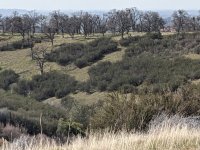MrBreeze911
Active member
Where I live in Northern California, different varieties of foxtail grass is common. This type of weed is dangerous to animals and a nuisance to humans. The little foxtail seed heads are spikey and, because of their physical makeup, can dig into the skin, ears, eyes, and mouth without being able to come back out. These foxtails can eventually burrow into an animals internal organs possibly and cause irreversible damage. I am just wondering if anybody here knows much about weed science, plant science, or soil science enough to know if there is a way to at least get rid of the foxtails on my property. I almost lost my dog, Cody, a couple years ago, and I don't want to have to go through that again. My grandpa lost a dog named Troy a few years ago to the grass. I am wondering if I fix the soil health and plant competing grass on the property, if that could get rid of the foxtails. We should get rid of these damn things along with house flies if you ask me, the little bastards.





